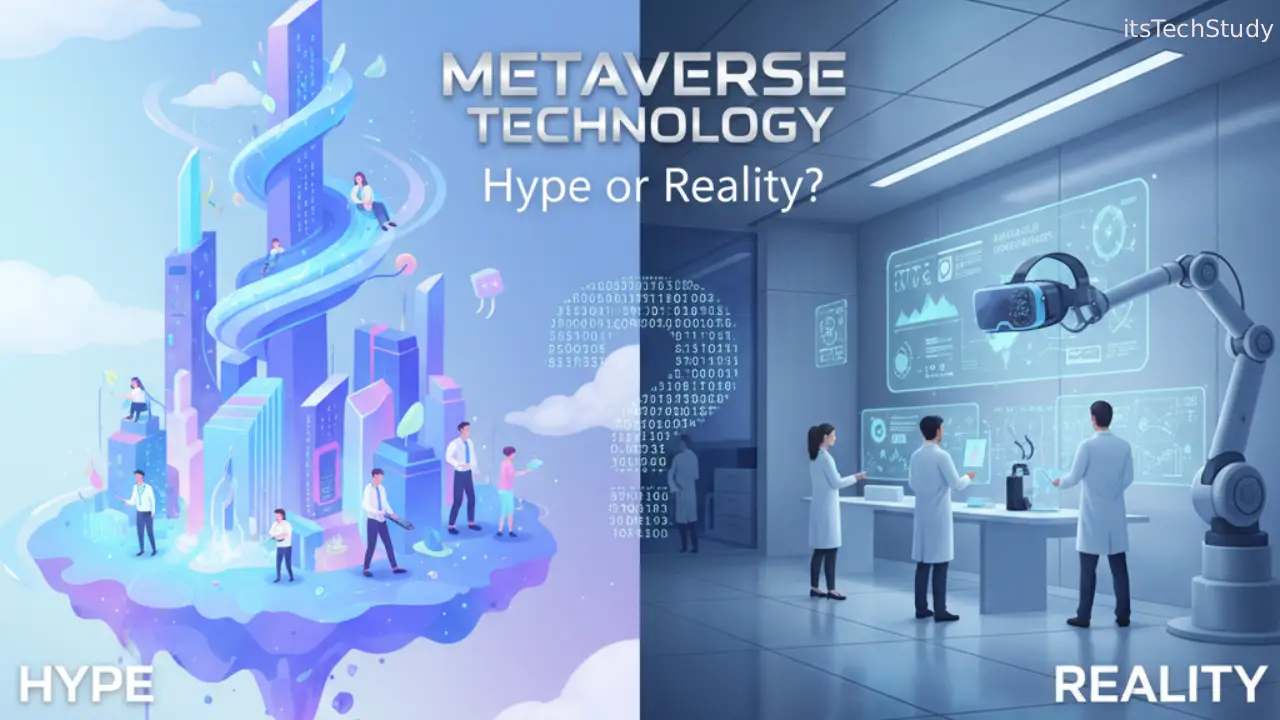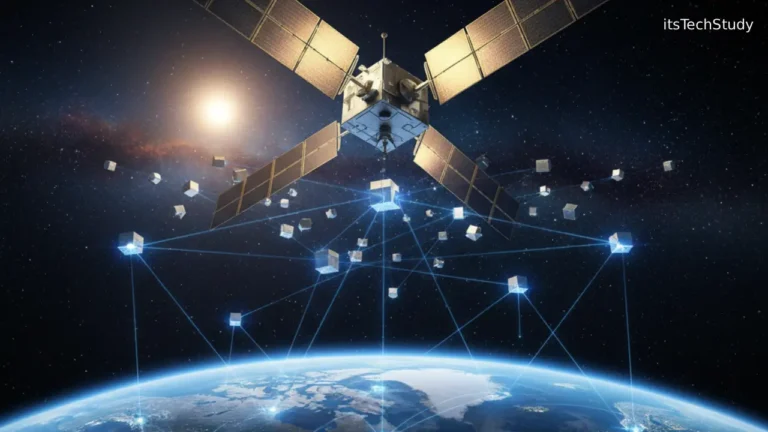Introduction: The Rise of a Digital Universe
For decades, technology has been inching closer to blending physical and digital realities. From the early days of the internet to social media revolutions, humans have always been drawn toward connected, immersive experiences. The concept of the Metaverse—a shared, persistent virtual world where users interact through digital avatars-seemed like the next logical step.
But as the buzz around the Metaverse skyrocketed in the early 2020s, so did skepticism. Was this the future of the internet-or just another overhyped tech fantasy? With big tech companies like Meta (formerly Facebook), Microsoft, and NVIDIA investing billions, the Metaverse promised to transform gaming, education, business, and even our social lives. Yet, real-world adoption remains limited, and the technology faces hurdles in accessibility, affordability, and practicality.
So, how can we separate what’s real from what’s hype? Let’s explore how the Metaverse works, where it stands today, and what the future may hold for this bold vision of digital existence.
What Exactly Is the Metaverse?
The term “Metaverse” was first coined by author Neal Stephenson in his 1992 novel Snow Crash, describing a virtual reality-based successor to the internet. Today, it refers to an immersive 3D digital space that merges virtual reality (VR), augmented reality (AR), blockchain, and artificial intelligence (AI).
In the Metaverse, users can:
- Interact with others using avatars
- Attend meetings, concerts, or classrooms virtually
- Buy, sell, or create digital assets (like NFTs)
- Build and own virtual properties
- Engage in hyper-realistic gaming experiences
Essentially, it’s a shared universe that exists online but feels tangible through advanced visual, sensory, and interactive technologies.
Why the Hype Around Metaverse Technology?
Several technological trends converged to ignite global interest in the Metaverse:
- Advancements in VR and AR – Devices like Meta Quest 3, Apple Vision Pro, and HTC Vive have made immersive experiences more realistic.
- Blockchain Integration – Ownership of digital goods and land became possible through NFTs and decentralized networks.
- Remote Work Revolution – The pandemic reshaped how we communicate, paving the way for virtual collaboration platforms.
- Social Connectivity and Gaming – Platforms like Roblox, Fortnite, and Decentraland introduced millions to shared virtual worlds.
The result? Massive media attention, rising investments, and a belief that the Metaverse could become “the next internet.”
The Reality Check: Challenges Facing the Metaverse
While the concept is fascinating, the Metaverse is far from mainstream adoption. Many barriers stand between hype and reality:
- Hardware Costs: VR and AR devices remain expensive and bulky.
- Connectivity: Seamless experiences require ultra-fast internet and low-latency networks.
- Standardization Issues: There’s no single platform or shared ecosystem—fragmentation limits interoperability.
- Privacy and Security Concerns: Data tracking, avatar identity theft, and harassment are growing issues.
- Environmental Costs: High energy consumption from blockchain and data centers raises sustainability concerns.
Comparing Hype vs. Reality in the Metaverse
| Aspect | The Hype | The Reality |
|---|---|---|
| User Experience | Fully immersive, lifelike digital world | Limited realism, still improving through better hardware |
| Adoption Rate | Everyone will soon join virtual worlds | Adoption mostly in gaming, slow in other sectors |
| Economy | Billions in virtual real estate and NFTs | Market volatility and limited real-world value |
| Business Use | Virtual offices and events as the new norm | Few companies have sustained success with VR workspaces |
| Technology Readiness | Seamless VR/AR integration | Still facing technical and cost challenges |
| Social Acceptance | Next-gen social media revolution | Many users prefer traditional digital interaction |
Pros and Cons of the Metaverse
Pros:
- Immersive Collaboration: Enhances remote teamwork and education.
- New Economic Opportunities: Opens doors for digital asset creation and trading.
- Enhanced Learning: AR/VR-based education offers experiential learning.
- Entertainment Evolution: Redefines gaming, concerts, and events in virtual environments.
- Cultural Preservation: Virtual spaces can recreate historical and cultural experiences.
Cons:
- Expensive Technology: Requires costly VR/AR gear and high-speed internet.
- Data Privacy Risks: Collects vast amounts of personal data.
- Addiction and Escapism: Extended use may affect mental well-being.
- Lack of Regulation: No clear global framework for digital property or identity.
- Environmental Impact: Energy consumption from servers and blockchains.
Real-World Applications: Where the Metaverse Is Actually Working
Despite the skepticism, there are genuine success stories and emerging use cases:
1. Gaming
Games like Roblox, Fortnite, and Sandbox have pioneered the Metaverse’s interactive model, enabling user-generated content and in-game economies.
2. Virtual Workspaces
Companies like Accenture and Microsoft use virtual offices for onboarding and team collaboration in mixed-reality environments.
3. Education and Training
Universities and enterprises employ VR simulations for skill training—medical students, for example, can practice surgeries virtually.
4. Real Estate and Architecture
Virtual land platforms like Decentraland allow users to purchase, design, and monetize digital properties.
5. Healthcare
VR therapies are being tested for anxiety treatment, pain management, and rehabilitation programs.
Metaverse and Web 3.0: The Digital Ecosystem Connection
The Metaverse doesn’t stand alone-it’s deeply connected to Web 3.0, the decentralized internet powered by blockchain. Together, they aim to give users ownership, control, and interoperability across platforms.
Key integrations include:
- Decentralized identities (DIDs) for secure logins.
- Smart contracts for transactions.
- Digital currencies for cross-platform economies.
However, these systems are still evolving and face challenges of scalability, security, and mass adoption.
Is the Metaverse the Future of the Internet?
The Metaverse holds immense potential-but its success depends on sustained innovation and real-world value. Right now, it’s a hybrid of genuine progress and inflated expectations.
The most realistic short-term vision may be a “mini-Metaverse” model-specialized digital spaces built for gaming, business, or education rather than a single global virtual world. Over time, as technology matures, these micro-worlds could merge into a unified digital ecosystem.
How To Evaluate the Metaverse for Your Business or Career
If you’re wondering how to approach this technology practically, here’s how to make informed decisions:
- Stay Informed: Follow credible tech journals, not just social media buzz.
- Experiment Small: Try platforms like Spatial or Decentraland before large-scale investment.
- Consider ROI: Focus on value creation-training, collaboration, or customer engagement.
- Develop Digital Skills: Learn 3D design, blockchain basics, and AR/VR tools.
- Stay Ethical: Protect user privacy and avoid exploitative business models.
Conclusion: The Balanced Perspective
The Metaverse represents both an ambitious vision and a technological experiment in progress. While hype often outpaces reality, real breakthroughs are happening-especially in gaming, education, and enterprise collaboration.
The key is realistic optimism: recognize its potential but understand the limitations. As innovation continues in VR, AR, AI, and Web 3.0, the Metaverse could eventually mature into a digital realm where creativity, commerce, and connection truly coexist.
Until then, separating hype from reality helps professionals, creators, and businesses prepare for what might just become the next great technological frontier.
FAQs About the Metaverse
Q1: Is the Metaverse the same as virtual reality (VR)?
Ans: Not exactly. VR is a tool used to access the Metaverse, but the Metaverse also includes augmented reality (AR), blockchain, and AI elements.
Q2: Can I make money in the Metaverse?
Ans: Yes, through selling virtual assets, NFTs, or services. However, profits depend on market demand and platform stability—so research carefully.
Q3: What companies are leading the Metaverse race?
Ans: Meta, Microsoft, Epic Games, NVIDIA, and Roblox are major players developing platforms, hardware, and ecosystems.
Q4: Is the Metaverse safe for users?
Ans: While exciting, it raises privacy and security risks. Always use strong authentication, verify platforms, and manage personal data wisely.
Q5: How soon will the Metaverse become mainstream?
Ans: Analysts predict broader adoption within 5–10 years, depending on affordability, infrastructure, and user interest.
Q6: How does AI fit into the Metaverse?
Ans: AI powers avatars, world-building automation, language translation, and adaptive learning, making virtual interactions more lifelike.












No Comments Yet
Be the first to share your thoughts.
Leave a Comment